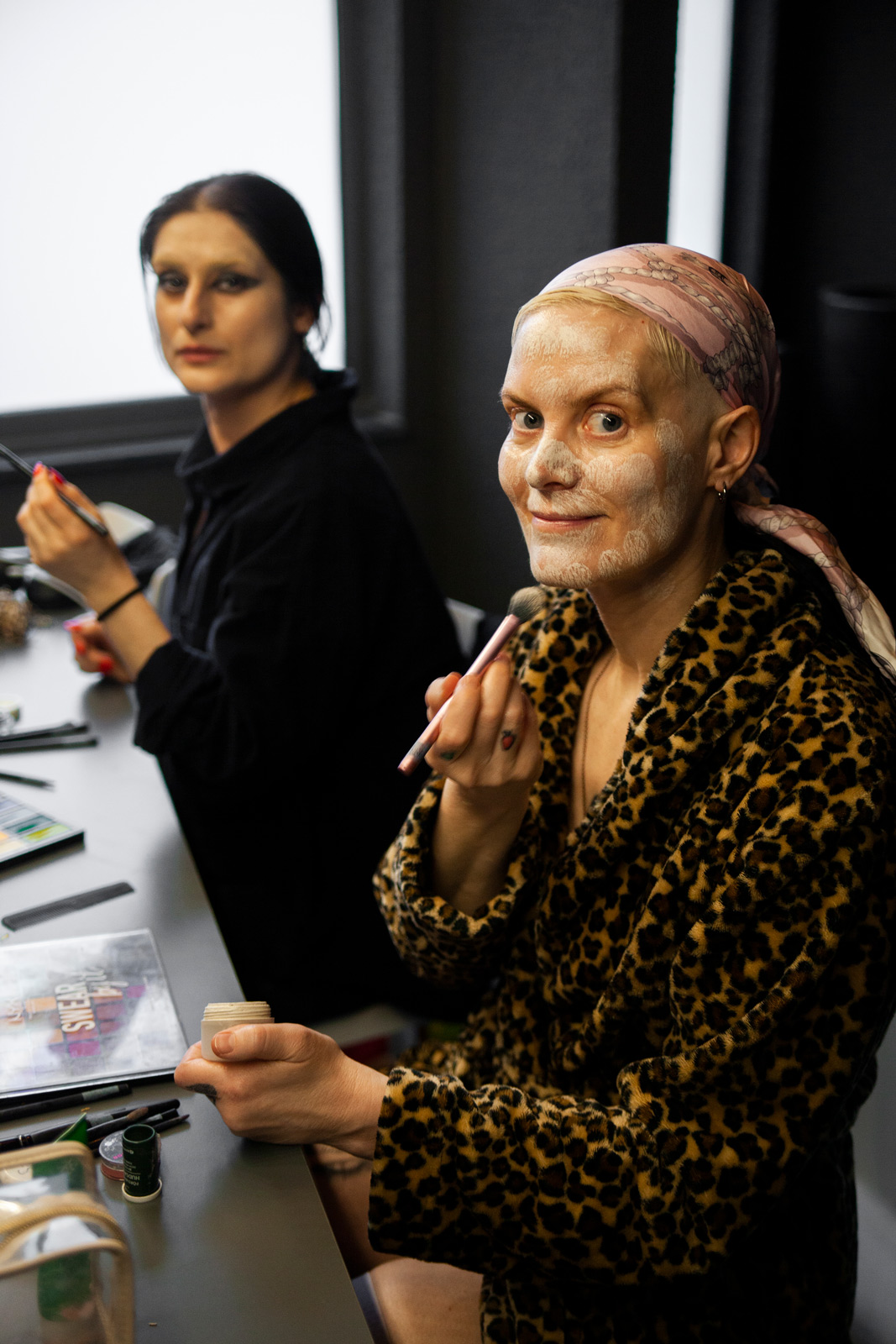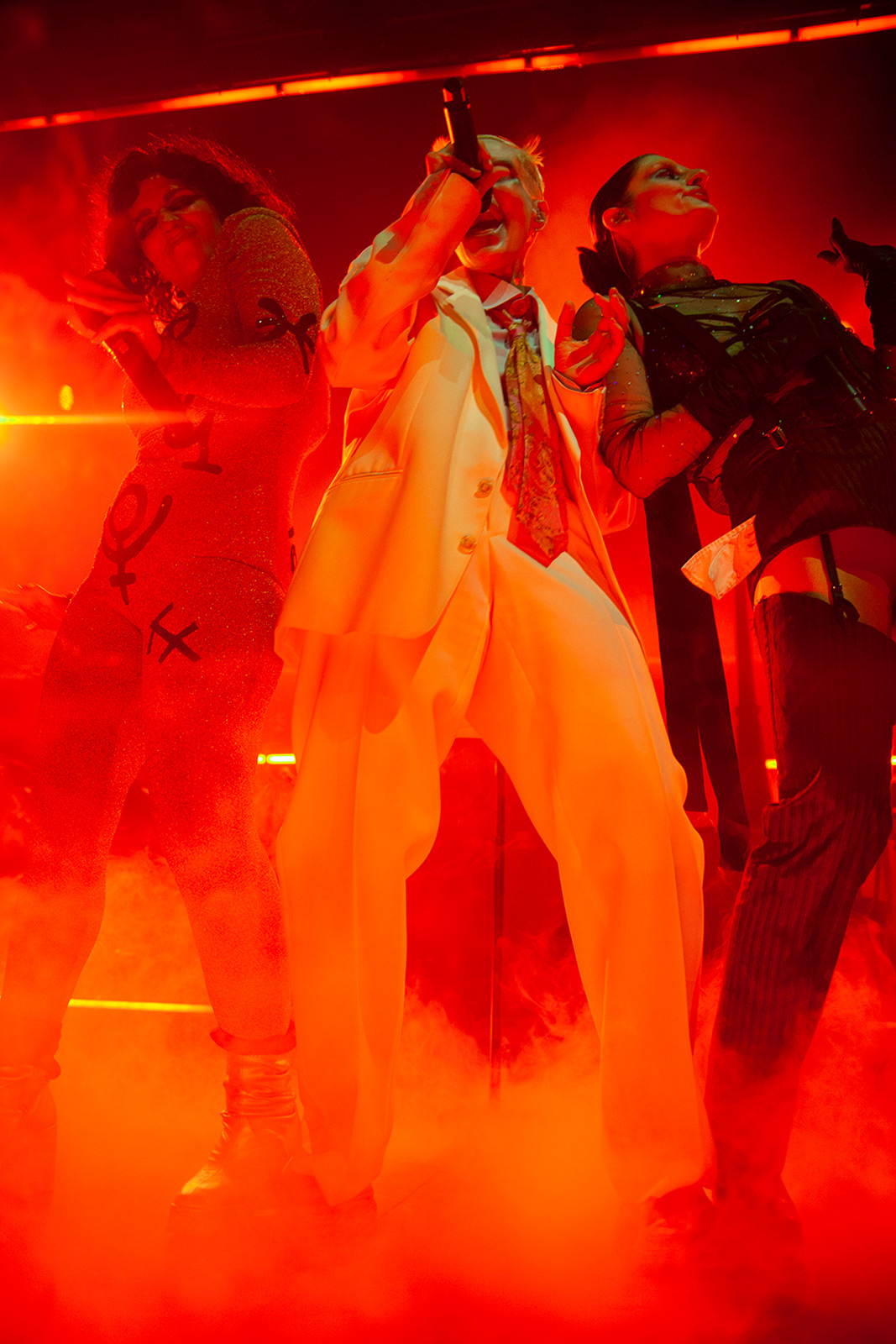Writer and philosopher FT reviews the ‘There’s No Place I’d Rather Be,’ tour—a “deranged circus,” with vocalist Karin Dreijer as its ringmaster
Fever Ray makes music the way David Cronenberg makes movies: visceral, writhing, slippery. What seems human turns out to be technology; what seems like a machine turns out to be flesh. Everything is oversaturated. Your ears have fallen into a parallel world that only kind of resembles our own.
Bringing such a distinctive sonic world to life—onstage and in three dimensions—is no simple task: As the number of session musicians continues to shrink, and the number of DJs continues to grow, the gap between recorded and live music is getting ever wider. Whether in their solo incarnation, or beside their brother Olof Dreijer as one half of The Knife, Karin Dreijer has never shied away from the challenge. They don’t simply play live—they put on a show. Every time I’ve seen them on a stage, it’s been a full-blown spectacle, tied to a recent record but always fully its own work. There are costumes; there’s choreography; the songs are reimagined and recontextualized. The last Fever Ray show in New York was in 2018, for the Plunge tour. The current There’s Nowhere I’d Rather Be tour, in support of the recently-released Radical Romantics album, is a slightly less elaborate and hectic production, but just as hypnotic and awe-inspiring. If Plunge was a delirious, deranged circus with Dreijer as its ringmaster, this time around, the circus performers have retired to a private club for an afterparty. Dreijer’s stage persona is less demonic clown and more tanned-leather Lothario, one part Vegas lounge lizard and one part Richard O’Brien in The Rocky Horror Picture Show.
Behind the distortion and pitch-shifting that often cloaks it on the record, Dreijer has a remarkable and distinctive voice. They also have a knack for unpredictable, eccentric hooks and a uniquely warped way of constructing melodies (and enunciating English syllables). Some of these uncanny effects are cleverly recreated onstage by having three voices sing at once in tight but imperfect harmony. Though signature Fever Ray synth squiggles are reproduced with remarkable audio fidelity, the live versions scrape away at the avant-studio wizardry just enough to reveal the song part of the songs. Side-by-side, the trio of “To the Moon and Back,” “Shiver,” and “Kandy” draws out the strippery Brazilian funk undertones of Plunge and Radical Romantics; “When I Grow Up” becomes a clave-and-conga fantasia—“La Isla Bonita” on acid. “I’m Not Done” bursts out of left field as a lift-up-your-hands house jam in the form of a 2019 remix; it’s immediately followed by the sweaty, distorted trance workout of “Carbon Dioxide.” If, in the studio, dance music roots writhe deep inside the songs, onstage they burst out rapturously.
There’s a brutal irony to the fact that, as we’re living through the nadir of live music economics, with bands canceling tours left and right, we’re simultaneously living through the Golden Age of live music technology. Since the beginning of this century, virtually every piece of gear—from amplifiers to mics to lighting rigs—has grown exponentially lighter, smarter, and more potent, allowing even relatively modest tours to put on shows that would have required several trucks a few decades ago. And though more and more of popular music’s audio matter is purely digital in origin, synthesizers, electronic drum kits, and other hybrid gear are now sensitive and sophisticated enough that virtually any electronic sound set can be performed live, with all the dynamism of a virtuosic human touch. Fever Ray’s current production takes advantage of all these developments by blending backing tracks, live samples, and acoustic instruments into a seamlessly throbbing whole, with two musicians and two backup singers on-stage with Dreijer. The light show is impressive as usual, culminating in a stunning backlit display during “If I Had A Heart”—once again, the emotional apex of the set. It’s hard to imagine it being anything else, really.
The Plunge era was marked by a turn to unexpectedly blunt lyrics for Dreijer, both sexually and politically. The album and the tour had an air of wide-eyed, exploratory Bacchanalia. The vibe of Radical Romantics is still direct and forceful, but less demanding. The contrast is clear when Plunge’s “To the Moon and Back” —with its deliriously excited cry, “I want to run my fingers up your pussy!”—is placed next to “Shiver,” with its plaintive, moaned refrain of “I just want to shiver.” It’s the top-vers representation we didn’t know we needed. Last time around, radicality felt like an imperative, with Dreijer determined to push you over the line. This time, they aren’t pushing; they’re waiting for you on the other side—daring you to come over to their table.



















